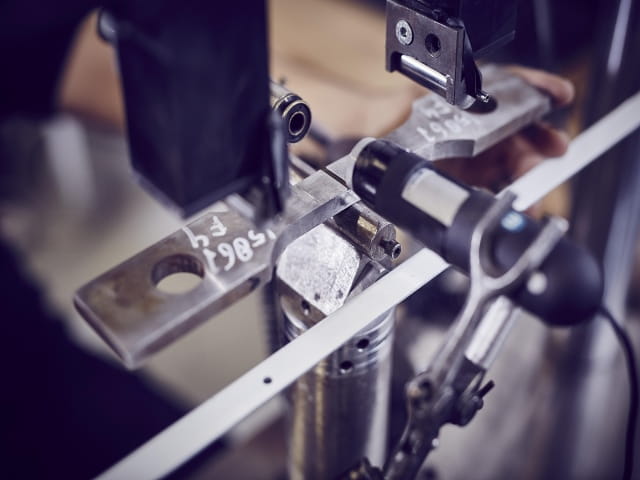A fractography analysis can reveal important information about failure mode, including the type of deformation that occurred and patterns of fracture. Element’s team of engaged experts provides fractography and materials test methods for failure analysis to determine the root cause of material, product, and engineering failures.
What is fractography?
Fractography is a partial form of failure analysis that deals with crack growth and fracture characteristics of metals, components, and engineering structures. Fractography is categorized into four major modes: fatigue, cleavage, dimple rupture, and decohesive rupture.
What is fractography used for?
Fractography is often used when corrosion or contamination of material is suspected, or when a complete failure has occurred. Our experts will use a variety of methods to categorize the fracture into one of four modes, and provide feedback on the fracture pattern and service loading.
Fatigue fractography
Fatigue fracture is caused by repetitive loading of a material or component. A fractography analysis can evaluate this by checking for fatigue striations and by determining the crack propagation mode and direction. By determining whether the crack is in Stage I (initiation), Stage II (propagation), or Stage III (total separation), a fractography analysis can determine where the material began to fail, and where the fracture terminated.
Cleavage failure mode
By contrast, cleavage is a low-energy fracture that occurred due to a rapid overload, under severe constraint, or in a metal’s brittle state. For this type of failure, a fractography analysis looks for macroscopic and microscopic features like river patterns, feather markings, and chevron patterns, to confirm transgranular cleavage as the fracture mode.
Dimple rupture mode
hen materials are overloaded in their ductile state or with little constraint, a dimple rupture may occur. When evaluating this failure mode, fractography experts will look for tell-tale signs of dimple rupture, such as microvoid coalescence.
Decohesive rupture mode
Decohesive rupture is often an intergranular failure method that involves the weakening of atomic bonds, and little plastic deformation. When combined with a full failure analysis, fractography is used to determine if these types of failures are caused by hydrogen or liquid metal embrittlement, stress corrosion cracking, creep, heat treatment embrittlement, or other causes.
Fractography analysis services
We provide detailed fractography reports for a variety of metallic materials. Using state-of-the-art equipment, in conjunction with a full failure analysis, we examine multiple characteristics to provide guidance and support about material properties and best practices for materials engineering.
The Element advantage
With a global platform of highly trained failure analysts, we are the ideal partner for fractography projects. Through advanced techniques, we can assist with virtually any type or size of fracture project. We are dedicated to supporting you through every step of the process, from initial analysis to final reporting.
For more information about our fractography services, or to request a quote, contact us today.
Fatigue Failure: How can you Tell?
Fatigue failure is an extremely important design consideration for a variety of industries. Learn more about the characteristics of fatigue failure.
READ MOREMetallurgical Failure Analysis
When components fail, it can affect the delivery of goods and the safety of the general public as well as result in costly repairs and downtime. Performing metallurgical failure analysis to understand why a part failed is critical to preventing future failures.
READ MOREManaging In-Service Occurrences
Failure analysis is not only a critical aspect of product development and system improvement, it is essential to prevent future issues.
Read MORERelated Services

Scanning Electron Microscopy (SEM)
SEM analysis is a powerful analytical tool which uses a focused beam of electrons to produce intricate, high magnification images of a sample’s surface topography.

Failure Evaluation
Element offers comprehensive capabilities to assist in determining root cause failure.

Fracture Toughness Testing
Element provides fracture toughness testing for determining material characteristics and longevity of metallic, nonmetallic, and advanced materials.

Metallurgical Testing
Find out more about our metallurgical testing expertise and our comprehensive range services, from grain size analysis to fractography.

